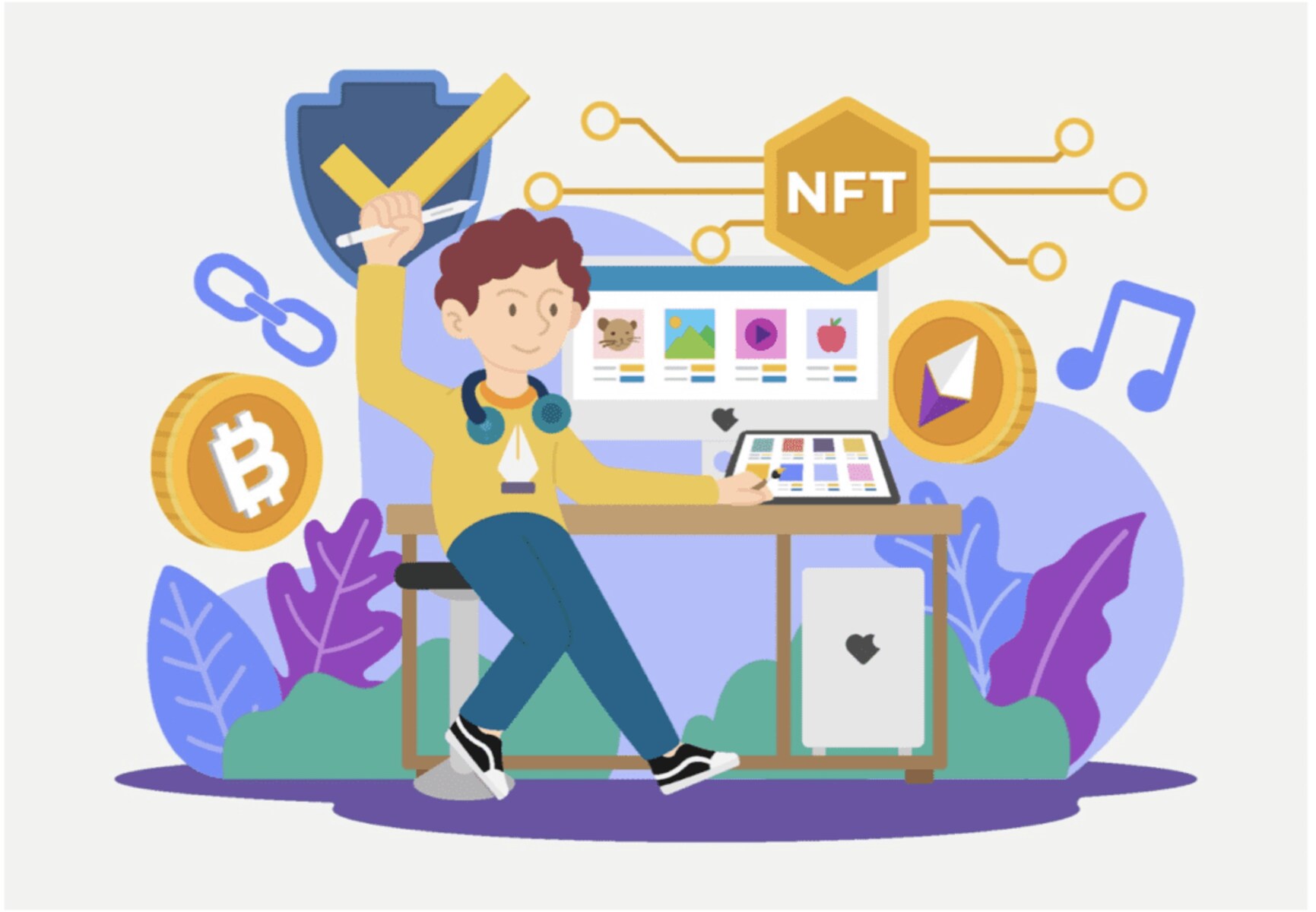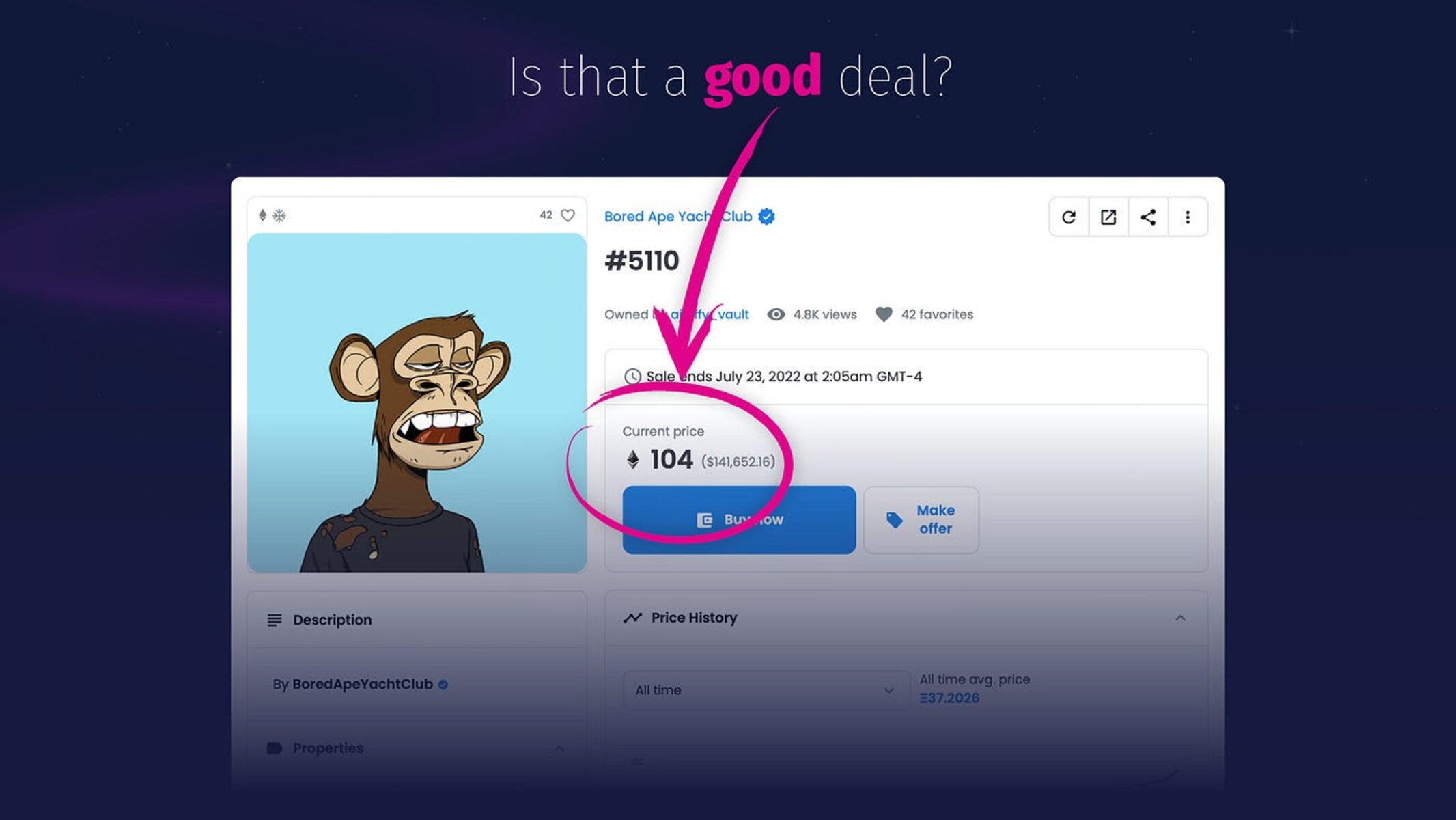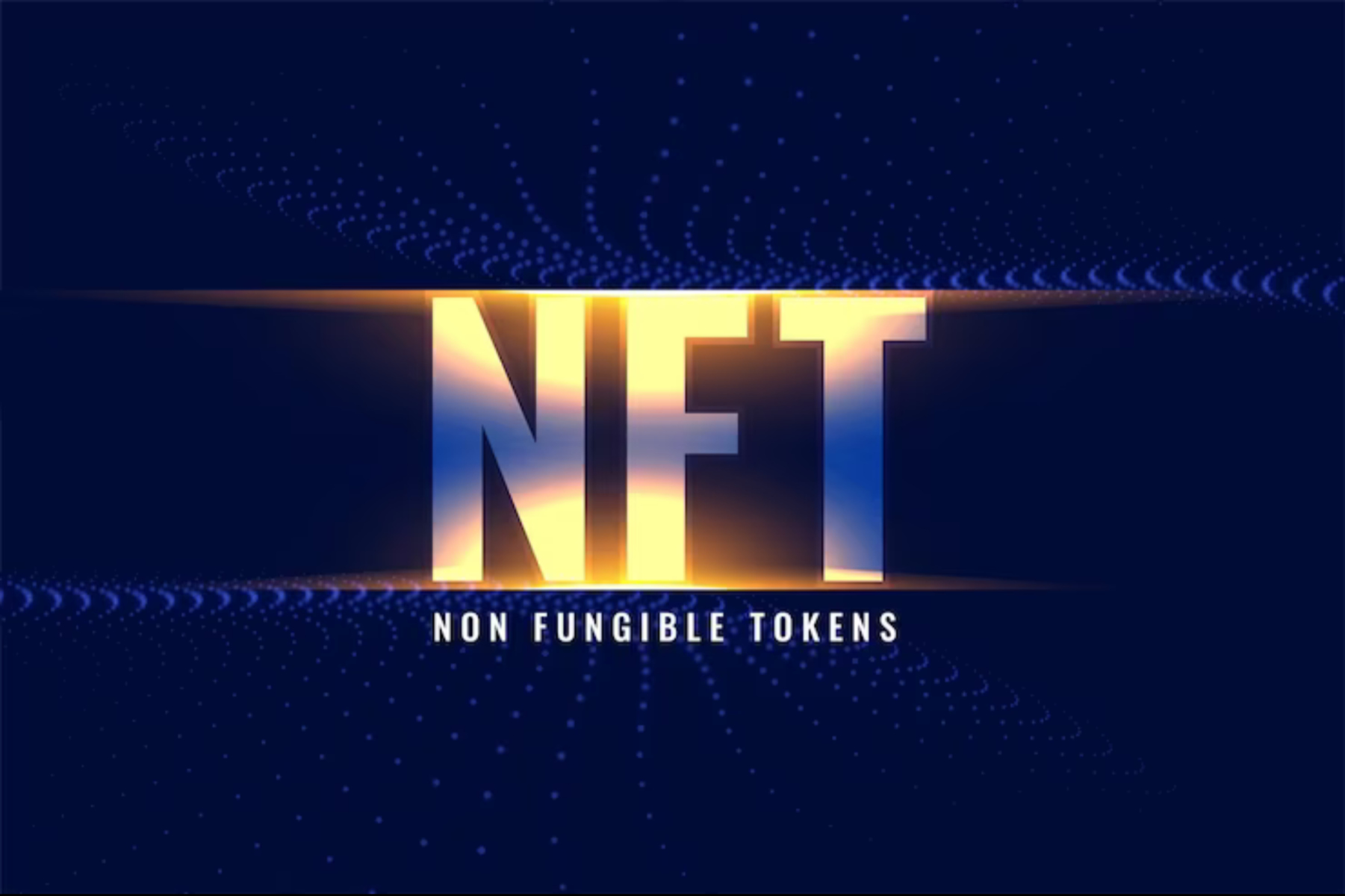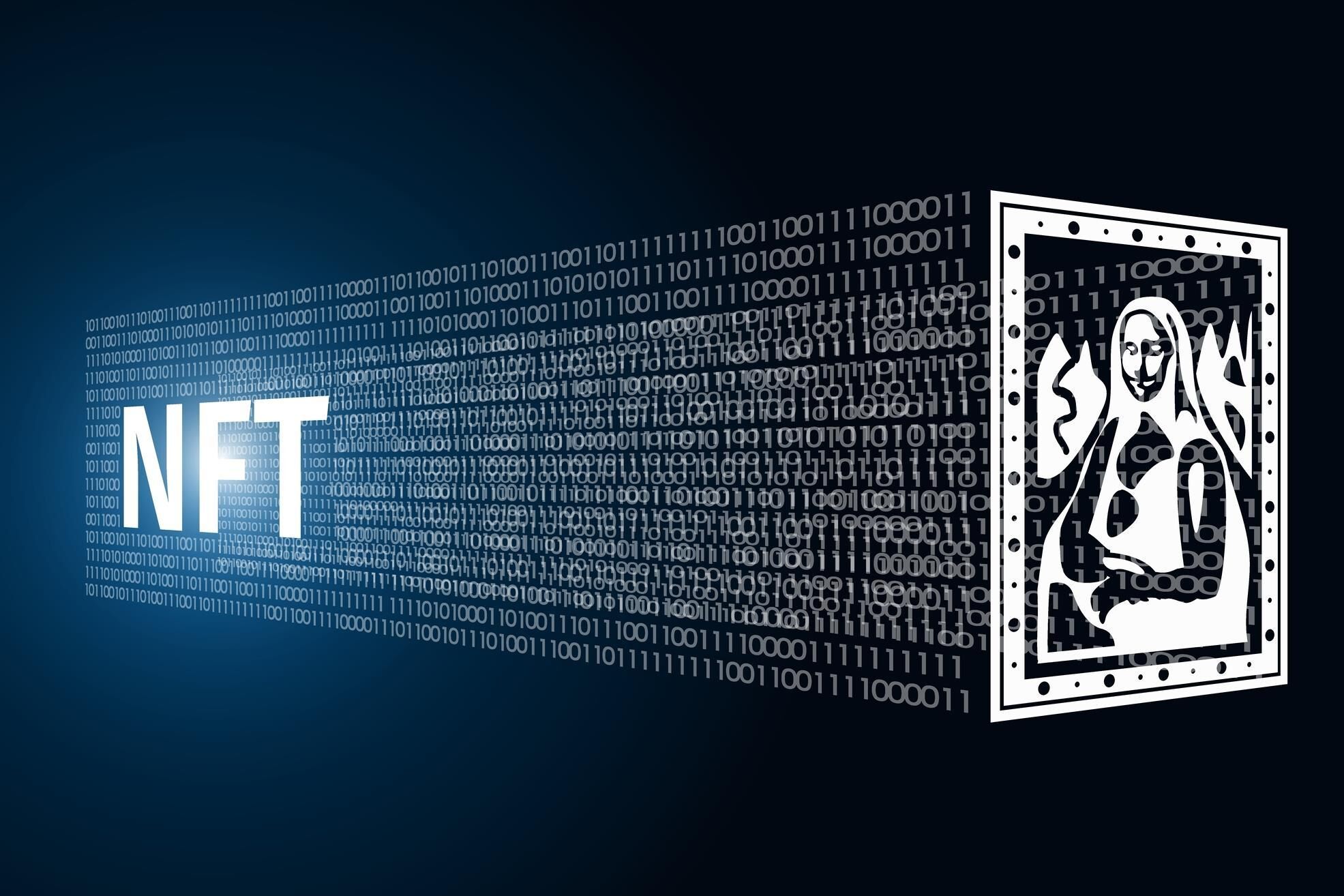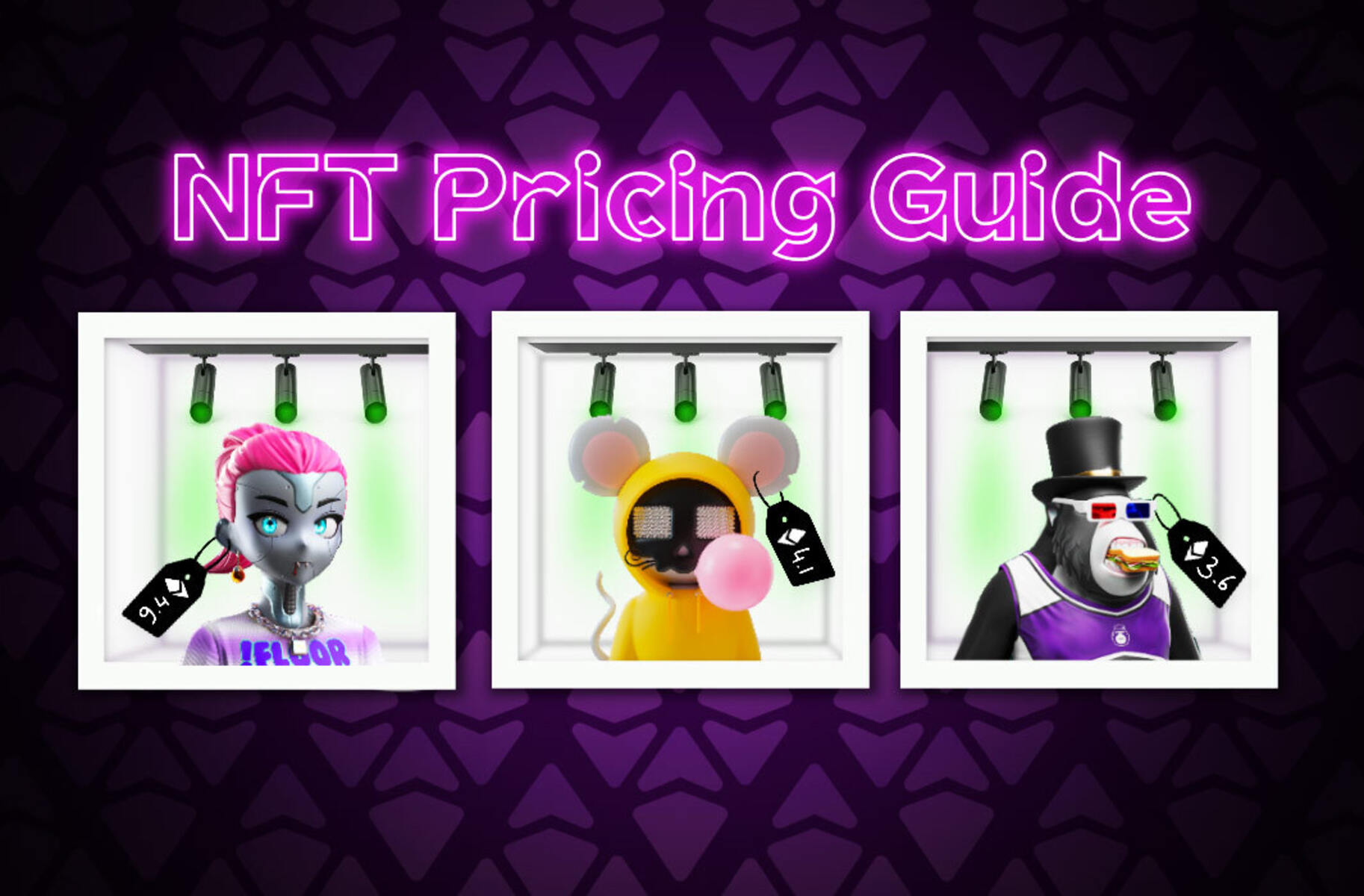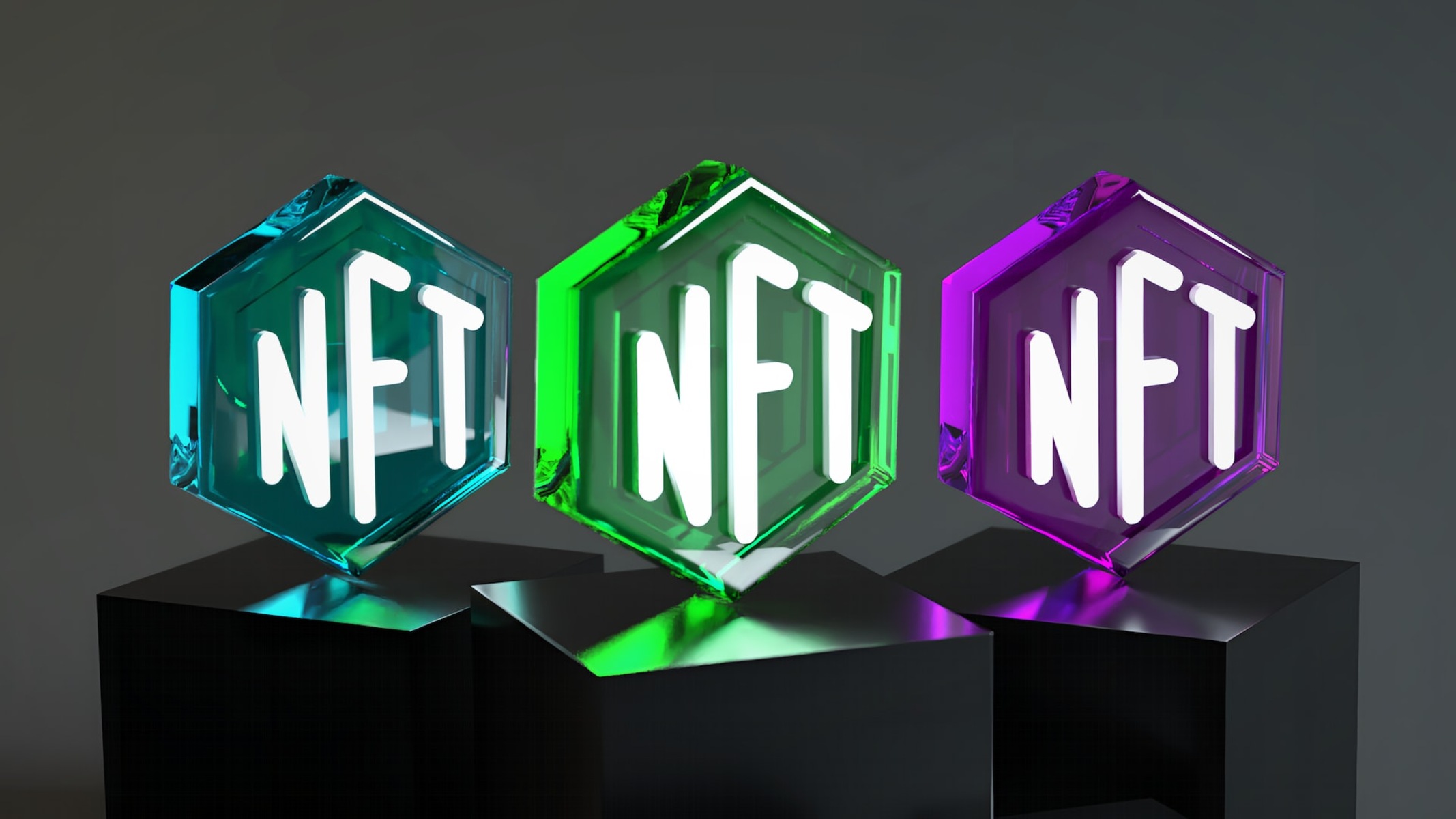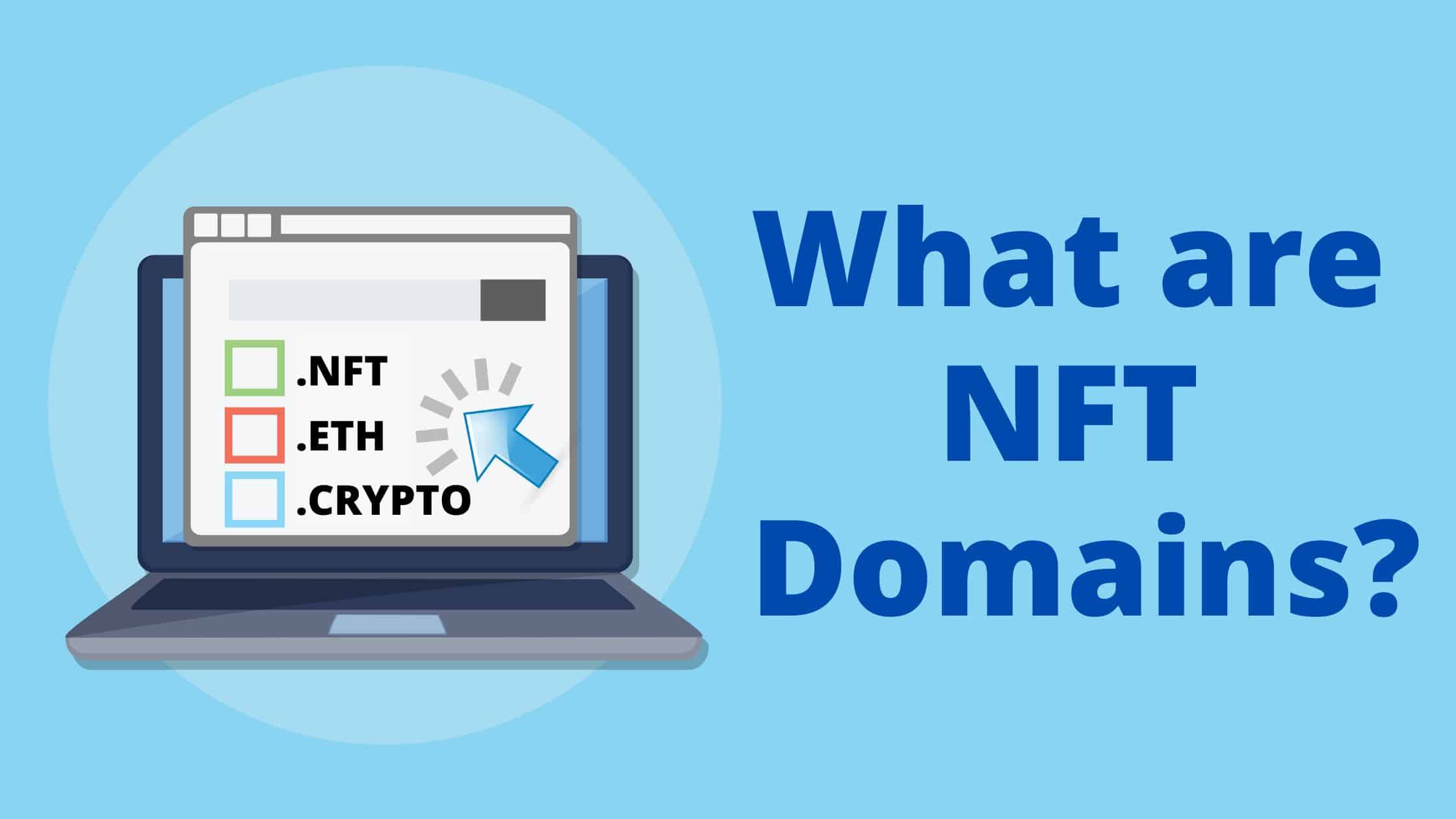Introduction
Welcome to the exciting world of Non-Fungible Tokens (NFTs)! In recent years, NFTs have captured the attention of artists, collectors, and investors alike, revolutionizing the way we perceive and trade digital assets. With the buzz surrounding NFTs, it’s essential for creators to understand how to effectively market their NFTs to reach their target audience and maximize their success in this rapidly growing industry.
Whether you’re an artist, content creator, or a business looking to tap into the NFT market, this guide will provide you with valuable insights and strategies to navigate the world of NFT marketing. From understanding NFTs and identifying your target audience, to selecting the right marketplace and implementing effective promotional strategies, we’ll cover all the essential steps to help you effectively market your NFTs.
Marketing NFTs requires a mix of creativity, strategy, and adaptability. As the NFT market continues to evolve, staying up-to-date with trends and understanding the preferences of your target audience will be crucial for your success. Through this guide, we’ll equip you with the necessary tools and knowledge to market your NFTs effectively and stand out in a crowded marketplace.
From creating compelling NFT artwork to promoting it on social media, engaging with relevant communities, and leveraging the power of influencers, we’ll explore various strategies that can help you gain visibility and attract potential buyers and collectors. Additionally, we’ll dive into the importance of building a personal brand, tracking your NFT performance, and navigating legal and copyright considerations.
So, whether you’re just starting your journey in the NFT space or looking to refine your marketing strategy, this guide will provide you with actionable insights and best practices to make your NFTs shine in the marketplace. Let’s dive in and explore the exciting world of NFT marketing!
Understanding NFTs
Before delving into marketing NFTs, it’s crucial to have a solid understanding of what NFTs are and how they function. NFTs, or Non-Fungible Tokens, are unique digital assets that exist on a blockchain network, usually the Ethereum blockchain. Unlike cryptocurrencies such as Bitcoin or Ethereum, which are fungible and can be exchanged on a one-to-one basis, NFTs are indivisible and cannot be exchanged on a like-for-like basis.
What makes NFTs truly unique is their ability to represent ownership and authenticity of a specific digital item, such as artwork, music, videos, virtual real estate, or even virtual goods in video games. NFTs rely on blockchain technology to ensure the scarcity, provenance, and ownership of these digital assets, making them highly valuable in the digital art and collectibles market.
NFTs are typically bought, sold, and traded on various NFT marketplaces, where artists and creators can list their digital assets for sale. Each NFT has a unique identifier and metadata that includes details about the asset and its ownership history. This public and transparent record allows buyers to verify the authenticity and provenance of the NFT before making a purchase.
One of the key advantages of NFTs is the ability to provide royalties to creators. Through smart contracts embedded within NFTs, creators can earn a percentage of future sales whenever their NFT is resold. This feature provides artists with a sustainable revenue stream and incentivizes them to continue creating and contributing to the NFT ecosystem.
NFTs have gained significant popularity due to their ability to digitize and tokenize collectibles, allowing for seamless digital ownership and transfer. They have opened up new opportunities for artists and creators to monetize their digital creations and reach a global audience.
It’s important to note that while NFTs have exploded in popularity, they have also faced criticism regarding their environmental impact and concerns around copyright infringement. As an NFT creator, it’s essential to consider these aspects and make informed decisions that align with your values and goals.
Now that we have a better understanding of what NFTs are and their potential, let’s dive into the next steps: identifying your target audience and finding the right NFT marketplace to showcase and sell your digital assets.
Identifying Your Target Audience
When it comes to marketing your NFTs successfully, identifying and understanding your target audience is crucial. Your target audience consists of the individuals or groups who are most likely to be interested in and purchase your NFTs. By understanding their preferences, interests, and behaviors, you can tailor your marketing efforts to effectively reach and engage with them.
Start by considering the type of NFTs you create and who they might appeal to. Are you creating digital artwork that caters to collectors and art enthusiasts? Are you designing virtual fashion items for gamers? Or perhaps you’re producing music NFTs for fans of a specific genre. Defining your niche and understanding the specific desires and needs of your target audience will greatly assist you in crafting your marketing strategy.
Utilize market research and data analytics to gain insights into your target audience. Social media platforms and NFT marketplaces often provide demographic and engagement data that can help you understand who is showing interest in your NFTs. Look for patterns and trends, such as age groups, geographical locations, and purchasing behaviors, to get a better understanding of who your audience is.
Engage with your existing audience through surveys, polls, or interactive content to gather feedback and learn more about their preferences and motivations. This valuable input can inform your marketing strategies and help you create content that resonates with your target audience.
Collaborating with influencers or artists who have a similar target audience can also be an effective way to expand your reach. By partnering with individuals who already have a dedicated following in your niche, you can leverage their audience to promote your NFTs and attract new buyers.
It’s important to continuously monitor and adapt your target audience strategy as the NFT market evolves. Trends and preferences may change over time, so staying up-to-date and regularly reassessing your target audience will help you stay relevant and continue attracting buyers.
Now that you have a clear understanding of your target audience, the next step is selecting the right NFT marketplace to showcase and sell your digital assets. We’ll explore this topic in the next section.
Choosing the Right NFT Marketplace
With the growing popularity of NFTs, there is no shortage of marketplaces where you can list and sell your digital assets. However, not all NFT marketplaces are created equal, and choosing the right one is crucial for maximizing your exposure and potential sales.
When selecting an NFT marketplace, consider the following factors:
1. Reputation and Credibility: Look for established and reputable NFT marketplaces that have a track record of success. Research their history, user reviews, and the quality of projects they host. Opting for a marketplace with a solid reputation can lend credibility to your NFTs and attract more potential buyers.
2. User Base and Audience: Evaluate the size and demographics of the user base on each marketplace. Does it align with your target audience? Consider the platform’s reach and whether it attracts the type of collectors or investors who are likely to be interested in your NFTs.
3. Platform Features and User Experience: Assess the marketplace’s features and user-friendly interface. Look for functionalities such as easy listing and customization options, robust search and discovery tools, and a smooth user experience. These features can greatly enhance your ability to showcase and market your NFTs effectively.
4. Fee Structure: Understand the fee structure of each marketplace, including listing fees, transaction fees, and any other charges or royalties. Evaluate how these fees may impact your earnings and compare them across different platforms to make an informed decision.
5. Community and Engagement: Consider the level of community engagement and interaction on the platform. Look for active communities, forums, or social media presence where you can connect with fellow creators, buyers, and collectors. A thriving community can provide networking opportunities and increase the visibility of your NFTs.
6. Exclusive or Curated Marketplaces: Some NFT marketplaces operate on an exclusive or curated basis, only accepting certain artists or projects. If you meet their criteria and believe your work aligns with their aesthetic or theme, these marketplaces can offer a unique opportunity to stand out among a select group of creators.
Take the time to research and experiment with different NFT marketplaces to find the one that best suits your needs and goals. Consider listing your NFTs on multiple platforms to increase your visibility and reach a broader audience.
Now that you have chosen the right marketplace, it’s time to focus on creating high-quality NFTs that will captivate your target audience. This will be our next topic of discussion.
Creating High-Quality NFTs
Creating high-quality NFTs is essential for attracting buyers and standing out in a competitive marketplace. Your NFTs should be visually appealing, well-crafted, and offer a unique value proposition to collectors. Here are some tips to ensure you create NFTs that leave a lasting impression:
1. Originality and Uniqueness: Aim to create NFTs that are distinct and original. Avoid using generic or overused themes and strive to offer something unique to your audience. This could be through your artistic style, concept, storytelling, or rarity of the digital asset.
2. Visual Quality: Invest time and effort into producing visually stunning NFTs. Pay attention to details like composition, color schemes, and overall aesthetics. Use high-resolution images or videos that showcase the intricacies and beauty of your artwork or digital creation.
3. Storytelling and Narrative: NFTs with compelling narratives tend to resonate with collectors. Develop a story or concept behind your NFTs that captivates the imagination of your audience. Connect emotions and meaning to your digital assets, making them more valuable and appealing.
4. Limited Editions and Rarity: Embrace the scarcity aspect of NFTs by creating limited editions or unique variations of your digital assets. Adding rarity and exclusivity can increase the perceived value and desirability of your NFTs.
5. Metadata and Tokenized Extras: Enhance the value of your NFTs by incorporating metadata and tokenized extras. Provide detailed information about the artwork, such as its creation process, inspiration, or artist statement. Consider bundling exclusive perks or experiences, such as access to future releases or VIP events.
6. Interactive or Dynamic Elements: Consider adding interactive or dynamic elements to your NFTs, making them more engaging and interactive for collectors. This could include animated artwork, 3D models, or experiences that evolve over time.
7. Collaboration and Cross-Promotion: Collaborating with other artists or creators can bring fresh perspectives and attract a wider audience. Consider partnering with artists from different disciplines or collaborating with influencers to create a unique and compelling NFT that appeals to a broader range of collectors.
8. Quality Control and Testing: Prioritize quality control by thoroughly reviewing and testing your NFTs before listing them for sale. Check for any technical issues, such as formatting errors or compatibility across different devices and platforms.
Creating high-quality NFTs requires a balance between artistic expression, technical proficiency, and understanding the preferences of your target audience. By investing time and effort into the creation process, you can produce NFTs that stand out and attract the attention of potential buyers.
Once you have your high-quality NFTs ready, the next step is determining the appropriate pricing to ensure your creations are both attractive to buyers and reflect their value. This will be discussed in our next section.
Pricing Your NFTs
Determining the right price for your NFTs is a critical aspect of successfully marketing and selling your digital assets. Setting an appropriate price requires consideration of various factors, including the perceived value, current market trends, and the uniqueness of your NFTs. Here are some guidelines to help you effectively price your NFTs:
1. Research Comparable NFTs: Start by researching similar NFTs within your niche or genre. Look at recent sales on various marketplaces to get a sense of the price range for comparable artworks or digital assets. Study the characteristics and qualities of these sold NFTs to understand how they contribute to their value.
2. Evaluate Your Value Proposition: Consider what makes your NFTs unique and valuable. Factors such as your reputation, artistic style, rarity, and any additional perks or bonuses bundled with the NFT can influence the price. Assess how these aspects differentiate your NFTs from others and adjust the pricing accordingly.
3. Consider Supply and Demand Dynamics: Take into account the demand for your NFTs and the scarcity you have created. If your NFTs are in high demand or have limited availability, you may be able to command a higher price. Conversely, if the market is saturated or demand is low, you may need to adjust the price to attract buyers.
4. Gradual Price Increase: Some creators choose to start with a lower price point for their initial NFT releases and gradually increase the price as demand grows. This approach can help build momentum and attract early buyers while creating a sense of exclusivity and value appreciation for future releases.
5. Tiered Pricing Structure: Consider offering different editions or tiers of your NFTs at various price points. This could include different levels of exclusivity, additional bonuses, or access to exclusive content. Providing options can cater to different collectors’ budgets and preferences.
6. Test the Market: If you’re unsure about pricing, consider conducting small-scale auctions or limited sales to gauge the market response. This can help you gather valuable insights and fine-tune your pricing strategy based on actual buyer behavior.
7. Flexibility and Adaptability: Be prepared to adjust your pricing strategy as the market evolves. Monitoring trends, feedback from buyers, and analyzing sales data will provide you with valuable information to make informed pricing decisions.
Remember, ultimately, the value of your NFTs is dictated by the buyers. Stay open to feedback and adapt your pricing strategy based on market demand and customer expectations. Finding the sweet spot between reasonable pricing and perceived value can help you attract buyers and maximize your revenue.
Now that you have a better understanding of how to price your NFTs, let’s explore effective ways to promote your NFTs on social media to reach your target audience.
Promoting Your NFTs on Social Media
Social media platforms are powerful tools for promoting your NFTs and reaching a wider audience. With their extensive reach and engagement capabilities, social media can help you generate buzz, showcase your NFTs, and attract potential buyers. Here are some effective strategies to promote your NFTs on social media:
1. Choose the Right Platforms: Identify the social media platforms that align with your target audience. Different platforms cater to different demographics and interests. For example, Instagram and Twitter are popular platforms for visual arts, while platforms like Discord and Reddit are known for their active NFT communities. Focus your efforts on platforms where your target audience is most likely to be present.
2. Content Strategy: Develop a content strategy that showcases your NFTs, tells your story, and engages your audience. Use high-quality images, videos, and descriptions that highlight the unique features and value of your NFTs. Share behind-the-scenes content, artist insights, and progress updates to nurture a sense of connection with your audience.
3. Hashtags and Keywords: Utilize relevant hashtags and keywords to make your NFTs discoverable to a wider audience. Research popular hashtags in your niche and incorporate them strategically into your social media posts. This can increase the visibility of your NFTs and attract individuals searching for related content.
4. Engage with the Community: Actively participate in NFT-specific communities, forums, and groups on social media platforms. Join discussions, provide valuable insights, and offer support to other creators and collectors. Engaging with the community helps build relationships, gain visibility, and position yourself as an authority in the NFT space.
5. Collaborate with Influencers: Collaborate with influencers and respected individuals in the NFT community to expand your reach and tap into their audience. Partnering with influencers can help you gain exposure to a larger and more targeted audience, increasing the chances of attracting potential buyers.
6. Contests and Giveaways: Organize contests or giveaways to incentivize engagement and attract attention to your NFTs. Ask participants to share or engage with your social media posts for a chance to win exclusive NFTs or related prizes. This can increase visibility, create excitement, and encourage word-of-mouth promotion.
7. Cross-Promotion: Leverage your existing network to cross-promote your NFTs. Collaborate with other artists, creators, or even brands to promote each other’s work. This mutually beneficial arrangement can expose your NFTs to new audiences and drive traffic to your social media profiles and NFT listings.
8. Paid Advertising: Consider utilizing paid advertising options on social media platforms to boost the visibility of your NFTs. Platforms like Facebook, Instagram, and Twitter offer targeted advertising options that allow you to reach specific demographics, interests, or followers of relevant accounts.
Remember to engage with your audience by responding to comments, messages, and inquiries promptly. Building and nurturing relationships with your followers and potential buyers is essential for creating a loyal and supportive community around your NFTs.
With effective social media promotion, you can significantly increase the visibility of your NFTs and attract potential buyers. Next, let’s explore the importance of engaging with NFT communities to further expand your reach and establish your presence in the NFT space.
Engaging with NFT Communities
Engaging with NFT communities is a vital aspect of marketing and growing your presence in the NFT space. NFT communities are vibrant and active hubs where creators, collectors, enthusiasts, and investors come together to connect, share knowledge, and discover new NFTs. Actively participating in these communities can help you gain visibility, build relationships, and establish yourself as a respected figure in the NFT world. Here’s how you can effectively engage with NFT communities:
1. Join NFT-Specific Communities: Identify and join NFT-specific communities on platforms like Discord, Telegram, or dedicated NFT forums. These communities are often divided into various channels or subreddits based on specific themes or interests. Find communities that align with your niche and engage in discussions related to your NFTs or broader industry trends.
2. Provide Value and Insights: Share your knowledge, expertise, and insights with the community. Contribute to discussions, offer advice, and provide valuable information related to NFTs. This positions you as an authority figure and builds trust among community members.
3. Ask Questions and Seek Feedback: Don’t hesitate to ask questions or seek feedback from the community. NFT communities are usually supportive and willing to help. By seeking feedback, you can gain valuable insights and refine your NFTs or marketing strategies.
4. Share Behind-the-Scenes Content: Offer glimpses into your creative process by sharing behind-the-scenes content. Documenting your journey, showcasing work-in-progress images or videos, or sharing tidbits about your inspirations can create excitement and engagement within the community.
5. Attend NFT Events and Meetups: Participate in virtual or physical NFT events and meetups to connect with like-minded individuals. These events provide networking opportunities, enable collaborations, and allow you to stay updated on the latest industry trends.
6. Cross-Promote with Community Members: Collaborate and cross-promote your work with other creators or artists within the community. By sharing each other’s NFTs and promoting one another, you can leverage each other’s audience and expand your reach within the community.
7. Be Respectful and Supportive: Respect the community guidelines and be supportive of others. Offer constructive feedback, celebrate others’ successes, and provide encouragement to fellow creators. Building positive relationships within the community can lead to long-term collaborations and support for your NFTs.
8. Stay Up-to-Date with Community News and Trends: Keep yourself informed about the latest news, trends, and discussions within the NFT community. Stay active in community channels, follow influential members, and engage in conversations. Being aware of community happenings allows you to participate in relevant discussions and adapt your strategies accordingly.
Engaging with NFT communities is not only about promoting your own NFTs but also about building meaningful connections, learning from others, and contributing to the growth of the community as a whole. By being an active and valuable member, you can establish your presence, attract attention to your NFTs, and foster a loyal following.
Next, we’ll explore the benefits of collaborating with influencers and artists in the NFT space to further expand your reach and gain exposure for your NFTs.
Collaborating with Influencers and Artists
Collaborating with influencers and artists in the NFT space is a powerful strategy to expand your reach, tap into new audiences, and gain exposure for your NFTs. Influencers and artists often have dedicated followers who trust their recommendations, making them valuable partners in your NFT marketing efforts. Here’s how you can effectively collaborate with influencers and artists:
1. Identify Relevant Influencers and Artists: Research and identify influencers and artists whose audience aligns with your target market. Look for individuals who have a substantial following and engagement within the NFT community. Consider their artistic style, values, and the type of content they create to ensure a good fit with your NFTs.
2. Reach Out and Propose a Collaboration: Craft a personalized and compelling outreach message to influencers and artists. Clearly communicate the benefits of collaboration for both parties and highlight how your NFTs align with their interests or values. Offer specific ideas for collaboration, such as cross-promotion, joint artwork creation, or limited-edition releases.
3. Provide Value to the Influencer or Artist: Showcase what you bring to the table in terms of value. Offer incentives such as revenue-sharing, exclusive access to your NFT releases, or unique perks. Consider how collaborating with you can benefit the influencer or artist and make it a mutually beneficial partnership.
4. Co-Creation and Cross-Promotion: Consider collaborating with influencers and artists on creating joint NFT artworks or projects. This can combine your expertise and creative styles, creating something unique and compelling. Use cross-promotion tactics to promote each other’s work, leveraging each other’s audience and expanding your reach.
5. Sponsored Posts and Endorsements: Collaborate with influencers and artists by sponsoring their content or receiving endorsements. This can involve having them feature your NFTs on their social media channels or creating dedicated content that highlights the value and appeal of your NFTs. Sponsored posts and endorsements can drive significant visibility and generate interest among their followers.
6. Affiliate Programs: Set up an affiliate program where influencers or artists earn a commission for every sale generated through their unique referral links. This incentivizes them to actively promote your NFTs and can lead to increased sales and exposure.
7. Genuine Engagement and Relationship Building: Foster genuine engagement with the influencers and artists you collaborate with. Interact with their content, comment on their posts, and build a relationship based on mutual respect and support. This not only strengthens the collaboration but also lays the foundation for long-term partnerships.
8. Track and Measure Results: Establish metrics and track the performance of your collaborations. Monitor the engagement, reach, and sales generated from each collaboration. Analyze the data to understand which collaborations are most effective and refine your strategies accordingly.
Collaborating with influencers and artists can significantly amplify your reach and expose your NFTs to new audiences. By leveraging the influence and credibility of these individuals, you can build trust and attract potential buyers who may be more inclined to invest in your NFTs.
Next, let’s explore the importance of building a personal brand as an NFT creator and how it can benefit your marketing efforts.
Building a Personal Brand as an NFT Creator
Building a strong personal brand as an NFT creator can greatly enhance your marketing efforts and establish your presence within the NFT community. Your personal brand reflects your unique identity, values, and style as an artist, making you more memorable and compelling to your target audience. Here’s how you can build a personal brand as an NFT creator:
1. Define Your Brand Identity: Start by clearly defining your brand identity. Consider your artistic style, the themes or concepts you explore, and the emotions you want to evoke through your NFTs. Think about the values and vision that drive your work and how you want to be perceived by your audience.
2. Consistent Branding Elements: Incorporate consistent branding elements across your online presence. This includes your logo, color schemes, typography, and overall visual identity. Consistency in branding helps to create a recognizable and memorable image for your audience.
3. Craft a Compelling Story: Develop a compelling story that articulates your journey as an NFT creator and what makes your work unique. Share your inspirations, challenges, and motivations behind your NFTs. A well-crafted story helps to connect with your audience on an emotional level and builds a personal connection.
4. Authenticity and Transparency: Be authentic and transparent in your interactions with your audience. Show your personality, share your process, and be open about your experiences as an NFT creator. Authenticity builds trust and fosters a deeper connection with your followers.
5. Consistent and Engaging Content: Consistently produce and share content that aligns with your brand identity and resonates with your target audience. This could include behind-the-scenes glimpses, tutorials, artist insights, or thought-provoking reflections. Engage with your audience by responding to comments, questions, and messages promptly.
6. Showcase Your Unique Value Proposition: Clearly communicate the unique value proposition your NFTs offer. Highlight what sets your work apart from others in the market, such as your style, techniques, or the stories behind your creations. Articulate how your NFTs benefit collectors and why they should invest in your artwork.
7. Collaborate and Network: Collaborate with other artists, creators, and influencers in the NFT space to expand your reach and gain exposure. Seek out opportunities for joint projects, cross-promotion, or events that align with your personal brand. Networking within the community paves the way for future collaborations and mutual support.
8. Consistency and Long-Term Focus: Building a personal brand takes time and consistent effort. Be patient and stay focused on your long-term goals. Continually refine and adapt your personal brand to stay relevant and aligned with the evolving needs and preferences of your target audience.
A strong personal brand differentiates you from the competition and attracts a loyal following of collectors who resonate with your work and values. By investing in your personal brand, you create a foundation for long-term success in the NFT market.
Next, we’ll explore the significance of leveraging cryptocurrency and blockchain networks to enhance your NFT marketing efforts.
Leveraging Cryptocurrency and Blockchain Networks
Leveraging cryptocurrency and blockchain networks is crucial for effectively marketing your NFTs. As NFTs are inherently tied to blockchain technology, embracing these networks can expand your reach, enhance security, and provide unique opportunities for engagement and monetization. Here are some ways to leverage cryptocurrency and blockchain networks for your NFT marketing:
1. Accept Cryptocurrencies as Payment: By accepting cryptocurrencies like Ethereum or other relevant tokens as payment for your NFTs, you unlock a global marketplace of potential buyers. Cryptocurrency transactions offer faster settlement, lower fees, and provide an added layer of security for both buyers and sellers.
2. Engage with Blockchain Communities: Participate in blockchain communities and forums to connect with individuals who are actively involved in cryptocurrencies and follow blockchain developments. Engage in discussions, provide insights, and share your NFT projects to gain exposure and attract potential buyers within these communities.
3. Use Blockchain for Provenance and Authentication: Leverage the transparency and immutability of blockchain technology to establish provenance and authenticate the ownership of your NFTs. This enhances the trustworthiness and value of your NFTs, attracting collectors who value authenticity and traceability.
4. Collaborate with Crypto Artists and Influencers: Collaborate with crypto artists and influencers who have a strong presence in the blockchain and cryptocurrency space. By partnering with them, you can tap into their audience and benefit from their insights and expertise in navigating the crypto art landscape.
5. Tokenize Digital Assets: Explore the potential of tokenizing additional digital assets, such as virtual merchandise, access to exclusive content, or digital experiences. By tokenizing these assets on the blockchain, you can create new revenue streams and provide added value to collectors beyond the initial purchase of your NFTs.
6. NFT Airdrops and Rewards: Consider conducting NFT airdrops or rewarding your community with exclusive NFTs as a token of appreciation. Airdrops and rewards can help generate excitement, loyalty, and word-of-mouth promotion within the cryptocurrency and blockchain communities.
7. Participate in Tokenized Communities: Join or create tokenized communities that offer additional benefits to holders of specific tokens. These communities can provide a direct line of communication with your most engaged fans and collectors, fostering deeper connections and loyalty.
8. NFT-based Gaming and Virtual Worlds: Explore opportunities to integrate your NFTs within blockchain-based gaming platforms or virtual worlds. This allows collectors to showcase and use your NFTs in immersive and interactive environments, expanding their utility and appeal.
By leveraging cryptocurrency and blockchain networks, you can tap into a global ecosystem of cryptocurrency enthusiasts and collectors. These networks offer unique opportunities for engagement, monetization, and increasing the perceived value of your NFTs.
Now that you’ve learned how to leverage cryptocurrency and blockchain networks, let’s delve into the importance of tracking and analyzing performance to optimize your NFT marketing strategies.
Tracking and Analyzing Performance
Tracking and analyzing the performance of your NFT marketing efforts is crucial for optimizing your strategies and maximizing your success in the NFT marketplace. By monitoring key metrics and analyzing data, you can gain valuable insights into the effectiveness of your marketing campaigns, understand buyer behavior, and identify areas for improvement. Here are some essential steps to track and analyze the performance of your NFTs:
1. Set Clear Goals: Start by defining clear goals for your NFT marketing efforts. Determine what you want to achieve, such as increasing sales, expanding your audience, or improving engagement. Having specific goals helps you track the right metrics and evaluate your progress effectively.
2. Monitor Sales and Revenue: Keep track of your NFT sales and revenue. Analyze which NFTs are performing well and which ones are not meeting expectations. Identify patterns and trends to understand the preferences of your buyers and adjust your strategies accordingly.
3. Analyze Engagement Metrics: Pay attention to metrics such as likes, comments, shares, and saves on your social media posts or NFT listings. Analyze the engagement levels of your audience to gauge the effectiveness of your content and messaging. Experiment with different types of content and observe how they impact engagement.
4. Follow Conversion Rates: Assess conversion rates to measure how successful your marketing efforts are in converting potential buyers into actual customers. Track metrics like click-through rates, downloads of associated files, or conversions from social media posts to sales. Identify any bottlenecks or areas where you can improve the conversion process.
5. Evaluate Referral and Traffic Sources: Determine the sources that drive traffic and referrals to your NFT listings or website. Analyze which social media platforms, influencers, or marketing channels are generating the most engagement and conversions. This information can guide your future marketing investments and help you allocate resources effectively.
6. Collect and Analyze Feedback: Solicit feedback from buyers and collectors to understand their experiences and satisfaction levels. Listen to their suggestions and consider making adjustments based on their insights. Feedback provides valuable qualitative information that complements the quantitative data you collect.
7. Utilize Analytics Tools: Employ analytics tools and platforms to track and measure your NFT marketing performance. Platforms like Google Analytics or social media analytics tools provide a wealth of data on user behavior, demographics, and engagement. Leverage these insights to make informed decisions and optimize your marketing strategies.
8. Iterate and Adapt: Continuously iterate and adapt your marketing strategies based on the insights gained from tracking and analyzing performance. Experiment with different approaches, measure the impact, and adjust your tactics accordingly. The NFT market is dynamic, so staying agile and responsive is crucial for long-term success.
Tracking and analyzing performance enables you to make data-driven decisions, optimize your marketing efforts, and refine your strategies to better resonate with your target audience. By continuously monitoring and iterating, you can improve the effectiveness of your NFT marketing and drive greater success in the marketplace.
Now that you understand the importance of tracking performance, let’s explore the legal and copyright considerations you should be mindful of as an NFT creator.
Navigating Legal and Copyright Considerations
When creating and selling NFTs, it’s vital to navigate legal and copyright considerations to protect your intellectual property and avoid legal issues. As an NFT creator, here are some important considerations to keep in mind:
1. Copyright Ownership: Ensure that you hold the necessary rights and permission for the content used in your NFTs. Make sure you own the copyright to the underlying artwork or have obtained the appropriate licenses from the original creators. Avoid infringing on the intellectual property of others.
2. Verify Authenticity: When purchasing or minting NFTs, verify the authenticity of the artwork or digital asset. Conduct due diligence to ensure that the NFT and its associated content are original and compliant with copyright laws. Websites and marketplaces may have their own guidelines for content verification.
3. Terms and Conditions: Create comprehensive terms and conditions that outline the rights, obligations, and limitations associated with your NFTs. Clearly communicate any usage restrictions and intellectual property rights to avoid potential misunderstandings or disputes.
4. Licensing and Royalties: Consider licensing your NFTs and incorporating royalties into your smart contracts. Define the terms under which your NFTs can be reproduced, distributed, or resold. Royalties can ensure that you receive a percentage of future sales, even after the initial purchase.
5. Fair Use and Derivative Works: Understand the concept of fair use and be mindful of any derivative works you create. Fair use allows for limited use of copyrighted material for purposes such as commentary, criticism, or parody. However, it’s important to understand the limitations and seek legal advice if in doubt.
6. Privacy and Data Protection: Comply with privacy and data protection regulations when collecting and storing personal data of buyers and collectors. Implement appropriate security measures and obtain consent to use personal information lawfully and responsibly.
7. Jurisdiction and Governing Law: Familiarize yourself with the relevant laws and regulations governing NFTs, cryptocurrencies, and digital assets in your jurisdiction. Understand the legal implications of conducting NFT sales, including tax obligations and compliance requirements.
8. Seek Legal Advice: As the NFT landscape is still evolving, it’s advisable to consult with legal professionals with expertise in intellectual property and blockchain technology. They can provide guidance on copyright issues, licensing agreements, and any legal considerations specific to your jurisdiction.
By being mindful of legal and copyright considerations, you can protect your intellectual property, maintain a good ethical standing, and minimize the risk of legal disputes. Stay informed about legal developments in the NFT space and seek legal advice when needed to ensure compliance with relevant laws and regulations.
Now that you understand the legal aspects of NFT creation, it’s crucial to focus on building long-term relationships with collectors to foster loyalty and sustainability.
Building Long-Term Relationships with Collectors
Building long-term relationships with collectors is key to fostering loyalty, maximizing sales, and creating sustainability as an NFT creator. Cultivating a strong bond with your collectors helps create a supportive community around your work and encourages repeat purchases. Here are some strategies for building long-term relationships with collectors:
1. Communicate and Engage: Regularly communicate and engage with your collectors to maintain a connection. Respond to their questions, comments, and messages promptly. Show genuine interest in their interest and feedback, making them feel valued and recognized.
2. Offer Exclusive Benefits: Reward your collectors with exclusive benefits and perks. This could include early access to new releases, limited editions, or special discounts. Providing exclusive experiences and rewards makes collectors feel appreciated and encourages continued support.
3. Show Gratitude: Express appreciation and gratitude to your collectors. Thank them for their purchases and support through personalized messages or acknowledgments on social media. This simple gesture goes a long way in building a positive relationship and loyalty.
4. Provide Regular Updates: Share regular updates on your creative process, upcoming projects, or behind-the-scenes insights. This keeps collectors engaged and excited about your work. Consider sending newsletters or creating a dedicated space on your website or social media platforms for these updates.
5. Collaborate with Collectors: Involve your collectors in your creative journey by seeking their input or collaborating on special projects. Consider running contests or engaging in co-creative initiatives where you incorporate their ideas or preferences. This fosters a sense of ownership and reinforces the bond between you and your collectors.
6. Host Exclusive Events: Organize virtual or physical events exclusively for your collectors. This could be a Q&A session, virtual art exhibit, or even a meetup. These events create a sense of community, allow collectors to connect with each other, and deepen the relationship between you and your dedicated fans.
7. Share Stories and Experiences: Tell stories and share personal experiences related to your NFTs. Share the inspiration behind your creations, the emotions imbued within them, or the impact they have had on your life. This personal touch creates a deeper connection with your collectors and fosters a sense of shared experiences.
8. Continuously Improve: Strive for continuous improvement and growth as an NFT creator. Listen to feedback from your collectors and use it to refine your work and offerings. Show that you care about their opinions and that you are committed to providing the best possible experience.
Building long-term relationships with collectors requires consistent effort and genuine care. By fostering a sense of community, offering exclusive benefits, and maintaining open lines of communication, you can create dedicated collectors who not only support your work but also become advocates for your brand.
Now that you have learned about building long-term relationships with collectors, let’s conclude this guide and encourage you to embrace these strategies to succeed in the exciting world of NFT marketing!
Conclusion
Congratulations! You are now equipped with valuable strategies and insights to market your NFTs effectively. The world of NFTs offers immense opportunities for artists, creators, and businesses to showcase their digital assets, connect with a global audience, and monetize their work like never before.
From understanding the fundamentals of NFTs and identifying your target audience to choosing the right marketplace, creating high-quality NFTs, and leveraging social media and influencer collaborations, each step in the process plays a crucial role in your marketing success.
Remember to stay true to your artistic vision and continuously refine your craft. Building a personal brand and engaging with NFT communities helps you create a loyal following and establish yourself as a respected creator in the NFT space.
Be diligent in navigating legal and copyright considerations, ensuring that you protect your intellectual property and abide by relevant regulations. Tracking and analyzing the performance of your NFT marketing efforts guides your decision-making, allowing you to optimize strategies, adapt to market trends, and maximize your success.
Lastly, building long-term relationships with collectors is essential for fostering loyalty and sustainability. Engage with your audience, show appreciation, and offer exclusive benefits to create a dedicated community around your work.
As the NFT market continues to evolve and grow, staying adaptable, keeping up with industry trends, and being open to new opportunities will position you for continued success.
Now it’s time to go out there, unleash your creativity, and make your mark in the exciting world of NFT marketing. Best of luck on your NFT journey!







